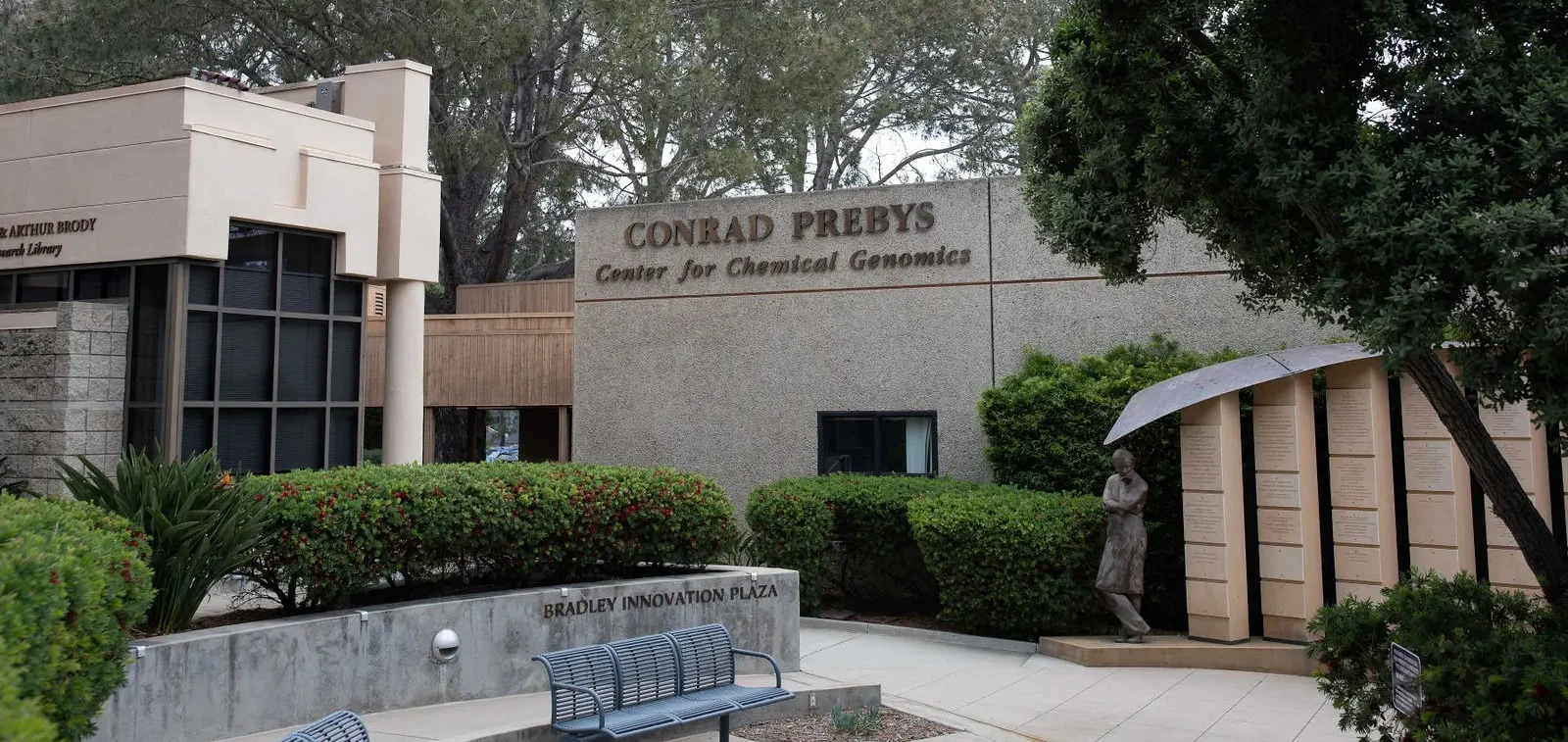The History of Sanford Burnham Prebys
It was 1976. President Nixon’s “War on Cancer” was officially five years old.
For William Harold Fishman, MD, PhD, (1914-2001) and his wife Lillian Waterman Fishman (1915-2013), the fight against cancer was longer and it was ongoing.
It would soon be going to California.
William Fishman was a long-standing and acclaimed cancer researcher, a professor of pathology at Tufts Medical School in Boston and founder of the Tufts Cancer Research Center, the first regional cancer center sanctioned under the 1971 National Cancer Act signed into law by Nixon.
Fishman was a pioneer in the emerging science of onco-developmental biology — how genes and their expression fueled carcinogenesis, the beginnings of cancer.
For more than four decades, Lillian Fishman had been his research partner. She was a renowned scientist in her own right, noted for her own contributions, such as helping to decipher placental alkaline phosphatases — enzymes involved in normal cell development that provided new context for understanding the abnormalities of cancer.
In 1975, nearing retirement age at the university, Fishman left Tufts, but not science. Both he and Lillian wanted to continue their promising research, specifically in how proteins involved in embryonic development might be used as tumor markers.
They looked west.
“My husband chaired an International Scientific Symposium in 1975 in La Jolla,” Lillian Fishman told The San Diego Union-Tribune in 2013, a few months before her death at age 98.
“He was so impressed with the environment and the burgeoning scientific community on the Torrey Pines Mesa that he suggested we take a vacation out west. Little did I know that we were about to embark on a new career in our mid-sixties….Bill was facing mandatory retirement….The head of the National Institutes of Health (NIH) came to our home in Boston and convinced Bill to continue his research. That was all it took.
In creating what would become Sanford Burnham Prebys, William and Lillian Fishman established and followed ten principles that have endured, and which remain as prescient and compelling as they were half a century ago, says their daughter Nina E. Fishman.
Guiding Principles
- Find the right people, give them what they need, allow them to pursue their curiosity.
- Create a place where people can do what they love with the least amount of hassle.
- People need to feel happy where they work, and know that someone cares about them.
- Have fun and celebrate accomplishments and meaningful milestones.
- Acknowledge people for the great work they do, in every part of the institute.
- Be a good role model.
- Be honest and as transparent as possible.
- Persist. Persist. And when the going gets tough, persist some more.
- Authority has to be linked to responsibility.
- Create systems that avoid organizational politics, power plays and misdirected competition at all costs. These behaviors suck the energy out of the organization.
“Armed with our dreams, a few frozen specimens and one $180,000 grant from the National Cancer Institute (NCI), we headed to San Diego. At the time, The Salk Institute, The Scripps Research Institute, Scripps Institute of Oceanography and UCSD were here. It wasn’t like Boston, with 300-plus colleges feeding into the workforce, but there was enough good science going on in the area that we knew it would work.
Lillian Fishman“(Bill) was so impressed with the environment and the burgeoning scientific community on the Torrey Pines Mesa that he suggested we take a vacation out west. Little did I know that we were about to embark on a new career in our mid-sixties.”
In La Jolla, the Fishmans leased space from Scripps Research in a renovated house on South Coast Boulevard. It would be the first home for the new La Jolla Cancer Research Foundation. They hired five employees. Their science — and vision — continued.
“When we started the La Jolla Cancer Research Foundation in our retirement years, we lived it. We ate it. We slept it. It was a part of us,” said Lillian. “We were determined to find solutions that would help cure human diseases.”
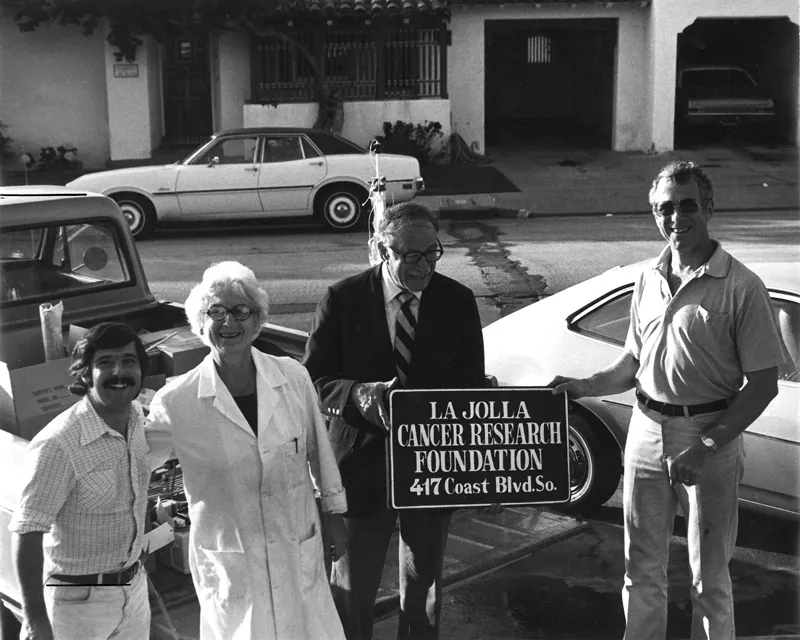
The Fishman’s at the original location on Coast Boulevard
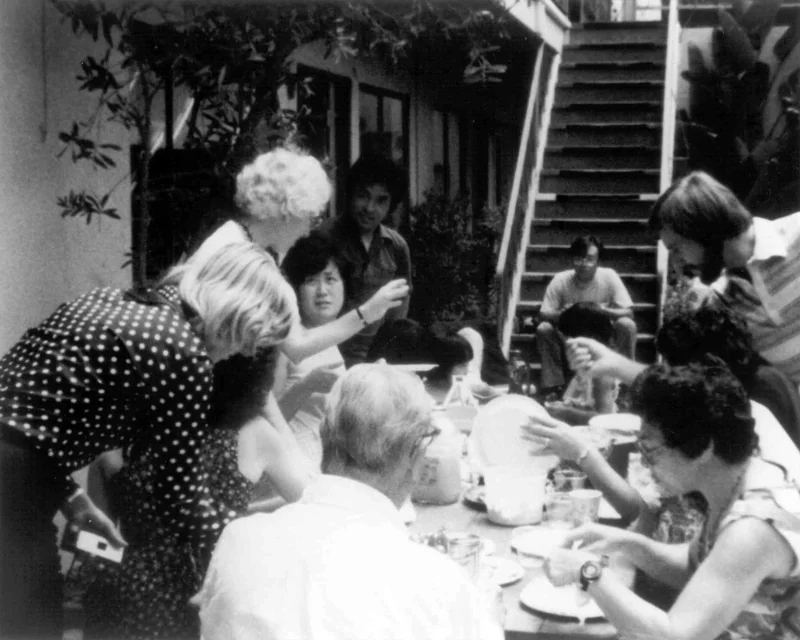
A reception at the original Coast Blvd. house with Lillian Fishman and lab members
In 1979, the NCI awarded the Foundation with a two-year grant that allowed it to move and expand facilities onto the Torrey Pines Mesa. That same year Fishman recruited Erkki Ruoslahti, MD, PhD, a renowned cancer researcher, to join the Foundation as scientific director.
Under Ruoslahti’s guidance, the Foundation quickly became a leading cancer research hub, particularly in cellular adhesion and gene regulation. Recognizing its advances, the NCI designated the La Jolla Cancer Research Foundation as a Basic Laboratory Cancer Center in 1981. At the time, there were only two other institutions with such a designation: the Salk and the California Institute of Technology.
Today, there are still only seven NCI-designated basic laboratory cancer centers in the nation.
“I’ve spent the best part of my life with the Institute, building it up. It was an incredible experience to be able to do that. From a handful of people, we grew to a major institution. I consider it partly my baby, and I’m very attached to it,” said Ruoslahti, who stepped down as president and CEO in 2002 but remains as a Distinguished Professor Emeritus.
Ruoslahti, who would go on to win numerous awards and recognition for his research (including the 2022 Lasker Basic Medical Research Award, sometimes called “America’s Nobels”) became president and CEO in 1989. The Foundation’s work began to expand and diversify to other research areas and diseases.
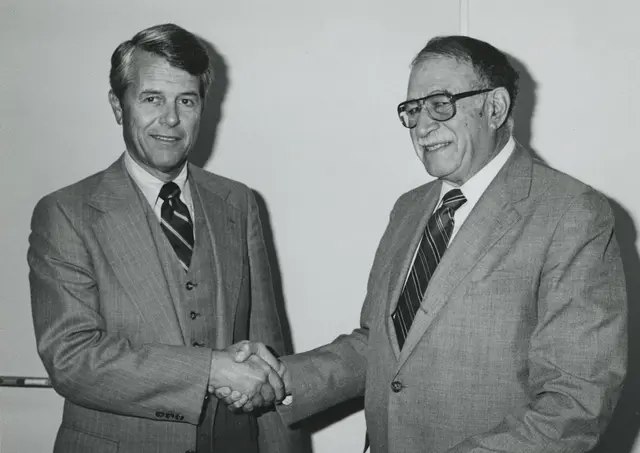
Malin Burnham (left) with William Fishman
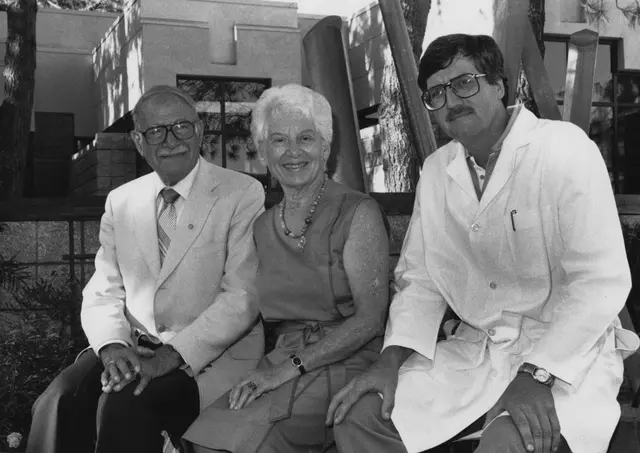
William and Lillian Fishman with Erkki Ruoslahti, MD, PhD (right)
In 1996, the Foundation was renamed The Burnham Institute after San Diego businessman Malin Burnham, who gave a $10 million gift with an anonymous donor.
“Scientists in those years were basically doing their science in a vacuum because they didn’t want their neighbor to see what they were doing. They thought, ‘They might steal my secrets,’” explains Burnham. “The Fishmans were just the opposite. They were all family. You were part of their team.”
In 2007, philanthropist T. Denny Sanford gave the Institute $20 million through Sanford Health, the largest rural health system in the U.S. and a longtime beneficiary of Sanford. The gift helped the Burnham Institute create the Sanford Children’s Health Research Center.
Three years later, Sanford donated $50 million and the Institute became the Sanford-Burnham Medical Research Institute. And in 2015, the name changed again to the Sanford Burnham Prebys Medical Discovery Institute, honoring a $100 million gift from local philanthropist Conrad Prebys (1933-2016).
The name has since been simplified to the current Sanford Burnham Prebys.
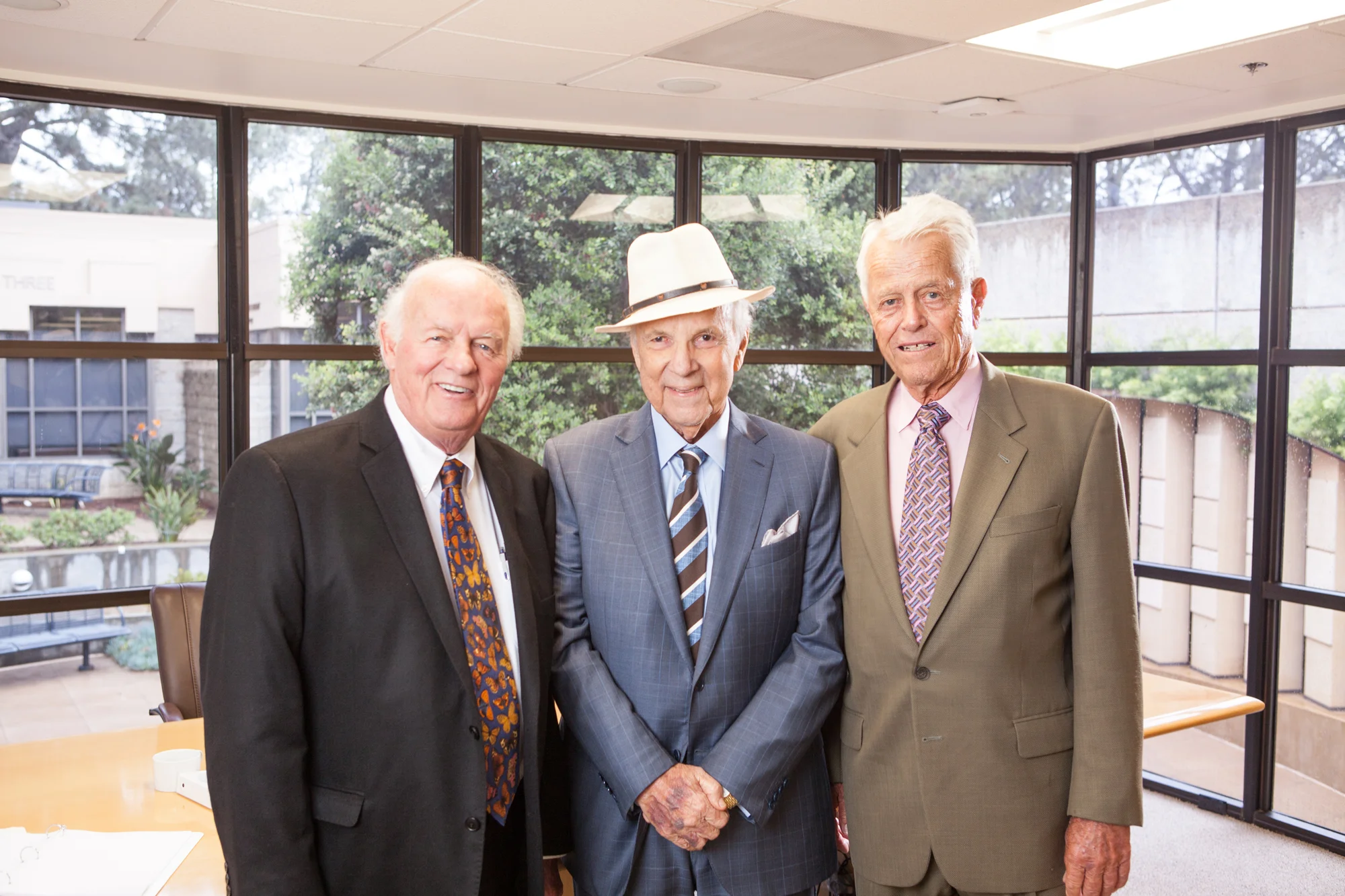
T. Denny Sanford, Conrad Prebys and Malin Burnham (left to right)
In recent decades, Sanford Burnham Prebys has established deep roots and an exemplary reputation across scientific disciplines, topics and endeavors.
In 2009, for example, Prebys made a $10 million investment to create a world-class drug discovery center.
“I lost four close friends to cancer last year, one to a type of leukemia I didn’t even know existed,” Prebys said at the time. “I have been very blessed in my life, and sometimes I wonder why. The only answer I can come up with is that I’m here to do some good in the world.”
The Conrad Prebys Center for Chemical Genomics today is the nation’s leading non-profit drug discovery center, employing innovative technologies to identify and develop new molecules and compounds that may form the basis for next-generation drugs in coordination with academic, public and industry partners.
The future of scientific research was addressed, in part, by the establishment of the Graduate School of Biomedical Sciences in 2006 to educate and train new, diverse cadres of scientists.
“Scientific discovery is a rewarding profession, and the future is now with new generations of scientists learning their trade at a time of emerging, innovative tools and technologies that are expanding the acquisition of knowledge at unprecedented rates,” said Alessandra Sacco, PhD, professor and dean.
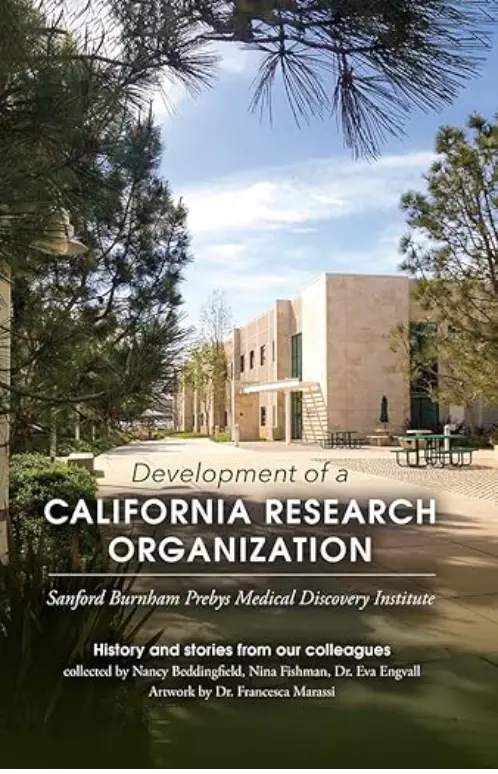
Further Reading
Learn more about the Institute’s history in the eBook Development of a California Research Organization: Sanford Burnham Prebys Medical Discovery Institute, written by Eva Engvall, PhD, MD; Francesca Marassi, PhD; Nancy Beddingfield and Nina Fishman, MEd.
Available for purchase on Bookbaby (available as a downloadable ebook and in hardcover).
Proceeds from the book sales go to The Fishman Fund, which supports postdoctoral students with two-year fellowships.
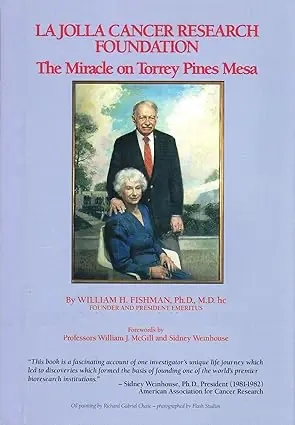
Learn more about the Institute’s founding in La Jolla Cancer Research Foundation: The Miracle on Torrey Pines Mesa, written by William H. Fishman, MD, PhD.
Available for purchase on Amazon.
